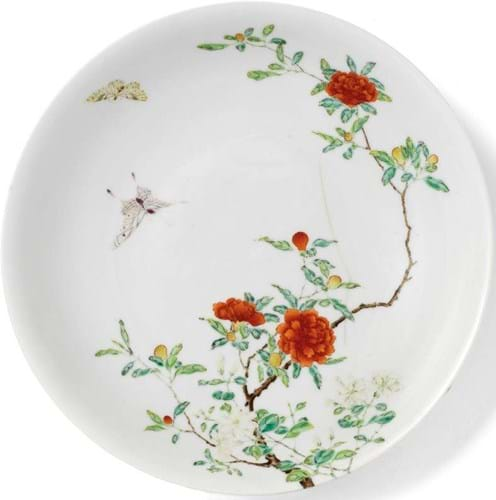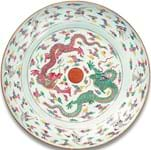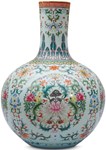This pattern, known as guozhi or overextended branches (the blossoming peony branches extend over the rim of the dish into the interior), is also a homophone of the phrase guozhi meaning prolonged peace under good government. It was first developed towards the end of the Ming dynasty and later became popular during the Yongzheng reign.
Despite its condition issues, that include a vertical crack to the well, it sold on its rarity and quality of decoration at £170,000 (estimate £3000-5000).
Acceptable damage
The dish was sold by Bluett & Sons in the 1920s and again at Sotheby’s in 1951 when it was bought by Yorkshire solicitor Robert Stanley Hope Smith (1910-79).
He and his wife Joan began collecting famille rose and famille verte porcelain in the immediate post-war years and were elected members of the Oriental Ceramic Society in 1959. Working on a relatively modest budget, they acquired pieces from well-known collections formed by Lord Cunliffe, Montague Meyer and Leonard Gow, along with OCS exhibition pieces. What may have not been key pieces for them became the core of this collection.
Broken pieces were quite acceptable. Kintsugi, the Japanese art of repairing pottery with lacquer dusted or mixed with powdered gold, silver, or platinum) was key to Robert’s passion, for he had suffered from polio as a child and walked with a cane. Joan died in 2000 and the collection, displayed in the back room of the family home in Bradford on a dresser alongside the piano and harpsichord, has since been in storage.
The 31-lot consignment, a boon for Bonhams’ Leeds office, sold for close to £500,000.















